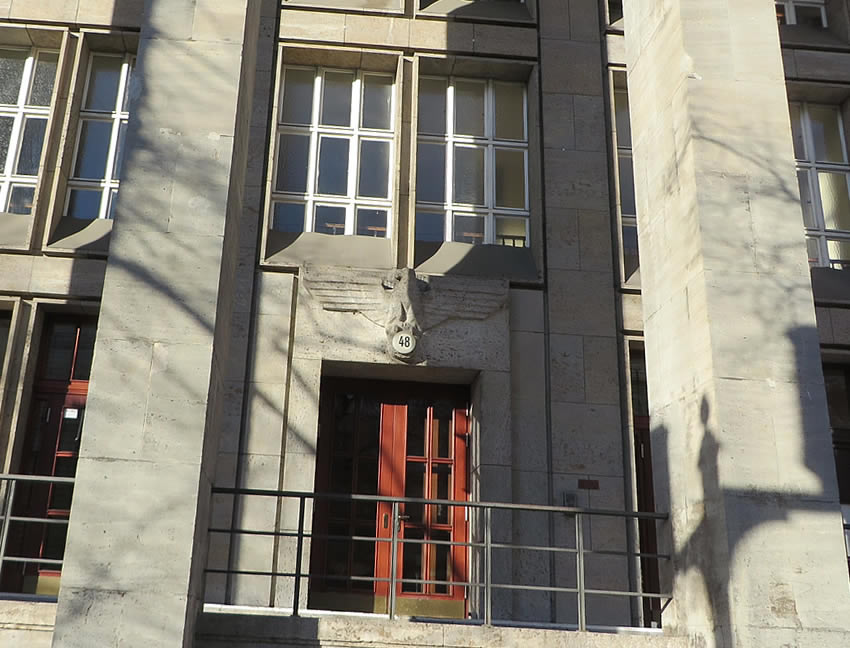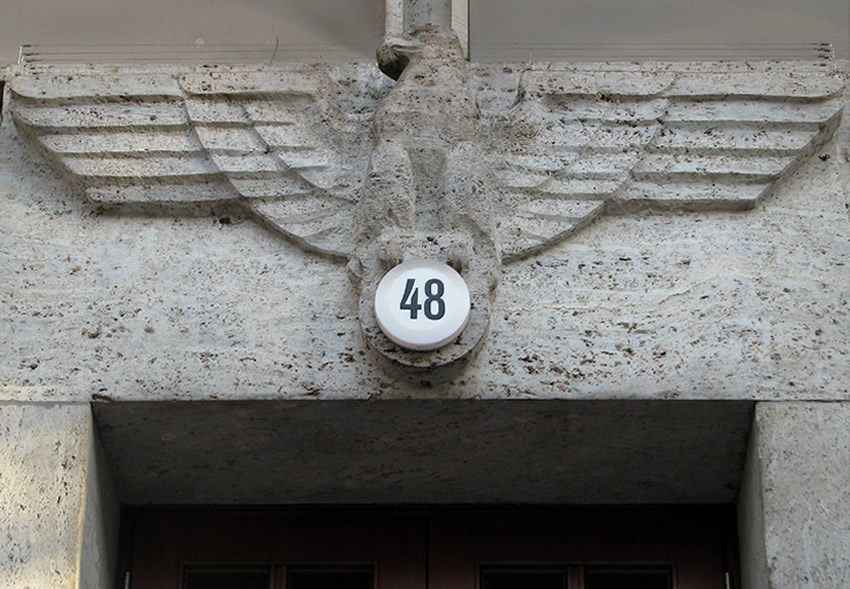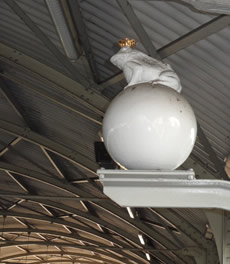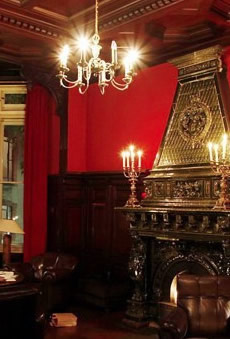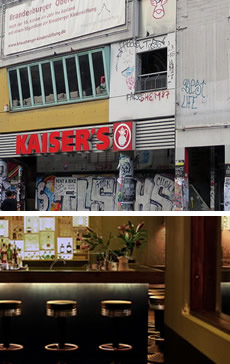Berlin
Hidden Third Reich remnants?
The tax office in Charlottenburg's Bismarckstrasse was completed in 1939, its monumental proportions and stark, angular lines exemplifying the favoured style of Third Reich architects.
And many believe that the stone eagle above the entrance door still grasps a swastika in its talons.
The so-called Reichsadler was commonly added to buildings constructed during Hitler's years in power, often grasping a garlanded swastika.
Following Germany's defeat in World War II, many of the eagles were removed completely or resculpted to obliterate any trace of Nazi insignia.
But in this case, it's often claimed that the outlawed symbol was simply concealed by the building's street number.
So what, exactly, lies beneath that plaque? You decide.
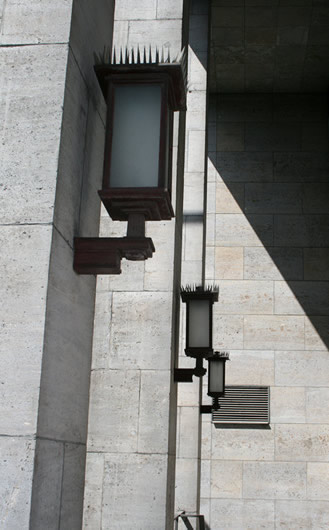
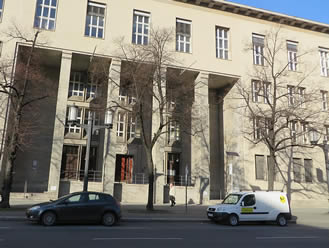
Further facts
Contrary to popular belief, the imperial eagle was never specifically a Nazi symbol, but had been used by the Germanic states for centuries beforehand.
Adopted by Hitler as a grand embodiment of political might, the addition of the swastika first ocurred in 1933, and in 1936 legislation was passed in order to regulate the Reichsadler's appearance.
By this time, however, examples of the eagle in a wide variety of styles had been incorporated into public buildings and monuments, many of which still exist throughout Berlin.
All have been modified to remove any swastika they once held - except, perhaps one.
See also:
Albert Speer's Berlin legacy
The mystery of Mohrenstrasse
A forest estate for the SS
Tax office (Finanzamt) Charlottenburg: Bismarckstraße 48, 10627 Berlin
